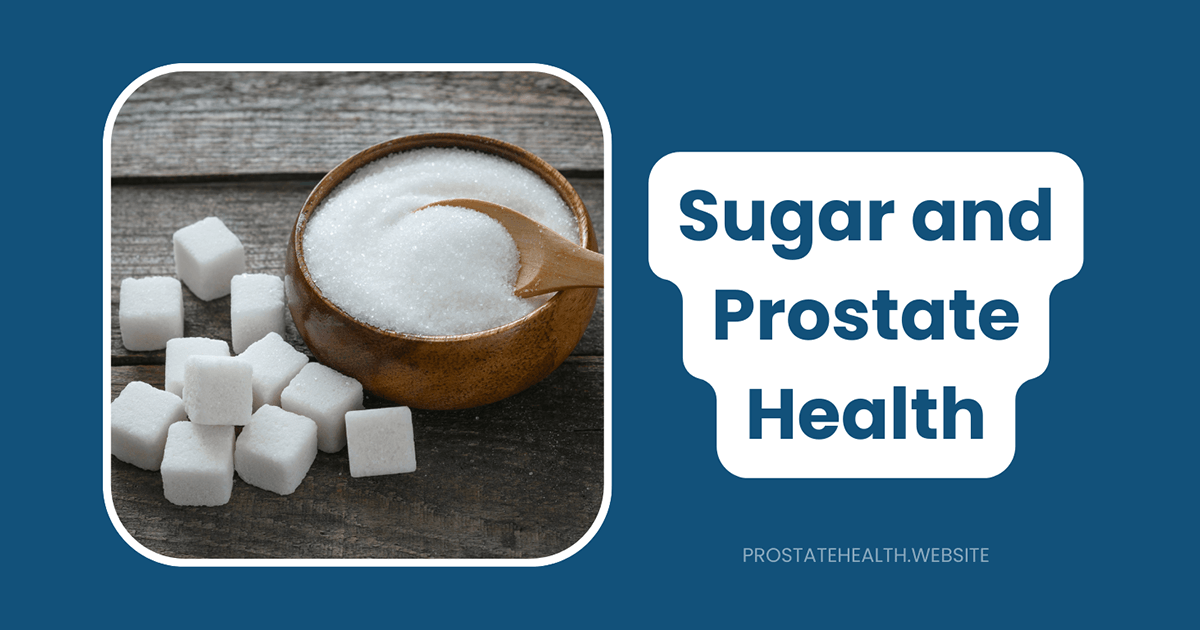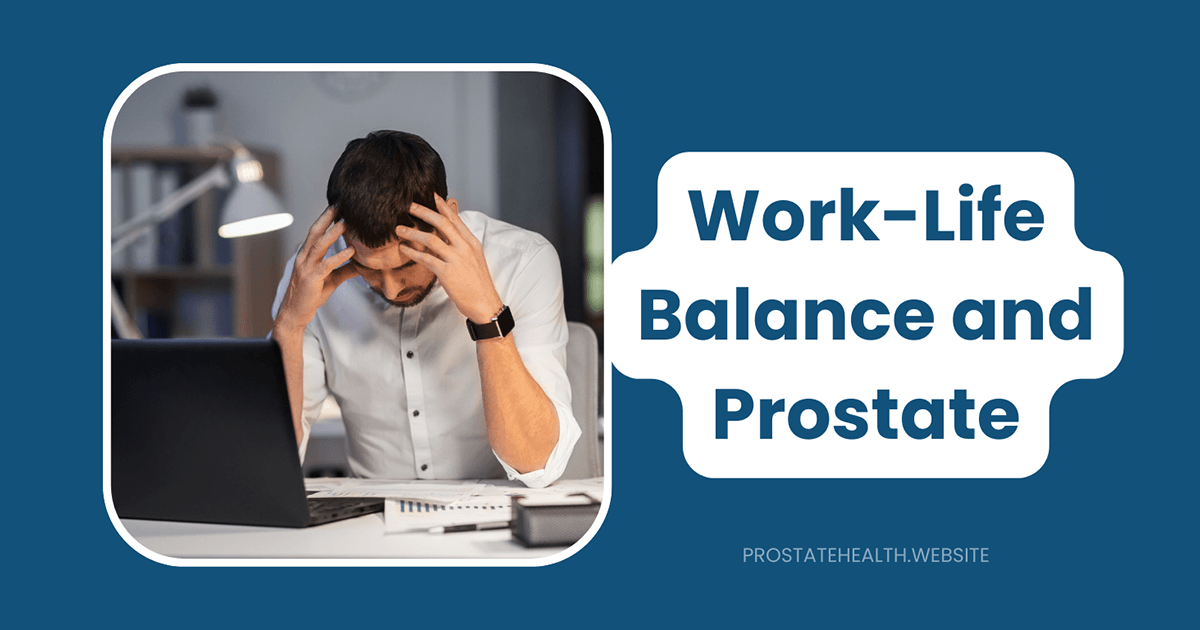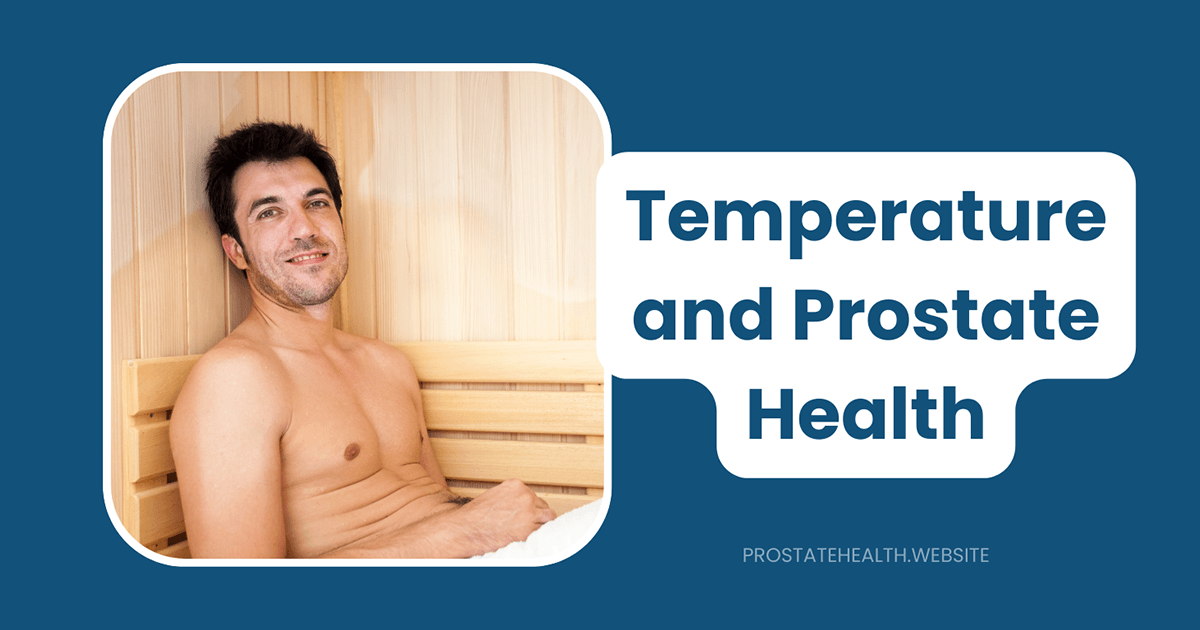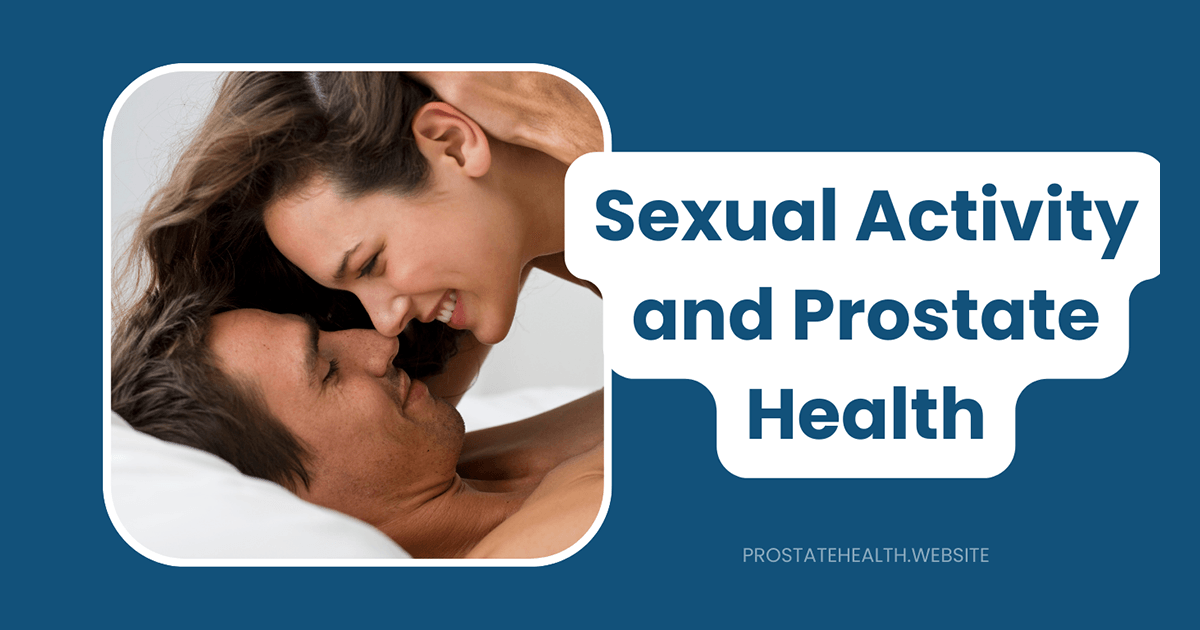The Impact of Sedentary Lifestyle on Prostate Health

When David, a 52-year-old software developer, started experiencing urinary problems, his doctor asked about his daily routine. “I sit at my desk coding for about 10 hours a day,” David admitted. “Then I usually unwind with a few hours of TV before bed.”
His doctor nodded knowingly. “Your prostate issues might be connected to your sedentary lifestyle,” he explained. “The human body wasn’t designed to sit for such extended periods.”
David’s story is increasingly common. In our modern world, many men spend the majority of their waking hours sitting—at desks, in cars, and on couches. This sedentary lifestyle has become so normalized that we rarely question its impact on our health, particularly on organs like the prostate.
Yet research increasingly suggests that prolonged sitting and physical inactivity may be taking a significant toll on men’s prostate health. From increased inflammation to hormonal imbalances, the mechanisms connecting sedentary behavior to prostate problems are numerous and concerning.
Let’s explore the science behind how inactivity affects your prostate and, more importantly, what you can do about it.
Understanding the Prostate: A Quick Primer
Before diving into how sedentary behavior affects prostate health, let’s understand this small but significant gland.
The prostate is a walnut-sized gland located below the bladder and surrounding the urethra. It produces fluid that nourishes and protects sperm, forming part of semen during ejaculation. As men age, the prostate commonly undergoes changes that can lead to various conditions:
- Benign Prostatic Hyperplasia (BPH): Non-cancerous enlargement of the prostate that can cause urinary symptoms
- Prostatitis: Inflammation of the prostate that may cause pain and urinary issues
- Prostate Cancer: The second most common cancer in men worldwide
These conditions affect millions of men, with BPH affecting approximately 50% of men by age 60 and up to 90% by age 85, according to Harvard Health. Prostate cancer will affect roughly 1 in 8 men during their lifetime, with the American Cancer Society estimating over 268,000 new diagnoses annually.
Given these statistics, understanding how lifestyle factors—including sedentary behavior—affect prostate health is essential for men’s overall wellbeing.
The Science: How Sedentary Behavior Affects Your Prostate
Research has identified several key mechanisms through which prolonged sitting and physical inactivity may negatively impact prostate health:
1. Increased Chronic Inflammation
Inflammation plays a crucial role in prostate health, with chronic inflammation linked to both BPH and prostate cancer development.
A 2024 study published in the Open Access Epigenetics & Genomics Journal found that “a sedentary lifestyle is a modifiable risk factor for prostate cancer, contributing to chronic inflammation and oxidative stress in the prostate gland.”
How does sitting increase inflammation?
- Reduced muscle contraction: When we sit for extended periods, we experience decreased muscle activity, which normally helps regulate inflammatory processes
- Impaired circulation: Prolonged sitting reduces blood flow, potentially allowing inflammatory markers to accumulate
- Increased fat tissue: Sedentary behavior often leads to increased body fat, which produces pro-inflammatory cytokines
According to a comprehensive review in PMC, “Sedentary behavior induces low-grade chronic systemic inflammation, linked to increased levels of inflammation-related markers such as C-reactive protein and interleukin 6,” which can directly impact prostate tissue.
2. Hormonal Imbalances
Sedentary behavior can disrupt the delicate balance of hormones that influence prostate health:
- Testosterone alterations: Prolonged sitting may affect testosterone levels and metabolism, potentially influencing prostate growth
- Increased estrogen: Sedentary lifestyles often lead to higher body fat, which converts testosterone to estrogen, potentially promoting prostate issues
- Insulin resistance: Physical inactivity leads to reduced insulin sensitivity, resulting in higher insulin levels that may stimulate prostate cell growth
A study in Science Direct notes that “mechanisms through which obesity affects prostate health include altered endocrine status” and that these changes “may contribute to the development of high-grade prostate cancer.”
3. Compromised Blood Flow and Circulation
Proper blood circulation is essential for prostate health, and sedentary behavior significantly impairs it:
- Pelvic congestion: Prolonged sitting can lead to blood pooling in the pelvic region, potentially causing prostate congestion
- Reduced nutrient delivery: Impaired circulation means fewer nutrients and oxygen reach the prostate
- Impaired waste removal: Poor circulation can allow metabolic waste products to accumulate around the prostate
According to Healthcare Utah, “exercise helps reduce inflammation and improve blood circulation, which are important for prostate health,” suggesting that the opposite—sedentary behavior—negatively impacts these processes.
4. Metabolic Dysfunction
Sedentary behavior disrupts normal metabolic processes in ways that may harm prostate health:
- Altered glucose metabolism: Prolonged sitting impairs the body’s ability to regulate blood sugar
- Lipid abnormalities: Sedentary behavior is associated with unhealthy cholesterol and triglyceride levels
- Metabolic syndrome: The cluster of conditions including increased blood pressure, high blood sugar, and abnormal cholesterol levels is linked to both sedentary behavior and prostate issues
A systematic review in Cancer Epidemiology, Biomarkers & Prevention supports “the role of adiposity and metabolic dysfunction as mechanisms linking sedentary behavior to cancer,” including prostate cancer.
5. Oxidative Stress
Prolonged sitting appears to increase oxidative stress—an imbalance between free radicals and antioxidants in the body:
- Increased reactive oxygen species (ROS): Sedentary behavior may increase production of harmful free radicals
- Reduced antioxidant capacity: Physical inactivity can impair the body’s natural antioxidant defenses
- DNA damage: Excessive oxidative stress can damage DNA in prostate cells, potentially leading to cancer development
The 2024 study mentioned earlier notes that “prolonged exposure to oxidative stress from a sedentary lifestyle can lead to genomic damage and promote neoplastic transformation in prostate cells.”
The Evidence: What Research Tells Us About Sitting and Prostate Health
The connection between sedentary behavior and prostate health is supported by a growing body of research:
Sedentary Lifestyle and BPH
- A cross-sectional study cited by Academic OUP found that “lower physical activity levels were linked to increased prostate-specific antigen (PSA) levels, hinting at a potential risk for BPH.”
- Research from the Institute for Functional Medicine indicates that “high levels of sedentary behavior (averaging 5.5 hours/day or more) increase the risk of developing several cancers, including prostate cancer.”
- A study referenced by Healthcare Utah found that “regular physical activity, such as walking, can lower the risk of developing BPH,” suggesting that the opposite—physical inactivity—increases risk.
Sedentary Behavior and Prostate Cancer
- A systematic review identified 18 articles linking sedentary behavior to cancer risk, with 10 studies showing statistically significant positive associations between sitting time and cancer, including prostate cancer.
- One study reported that “men whose lifetime occupation has involved mostly sitting had a 27% increased risk of prostate cancer.”
- Research suggests that the relationship may be strongest for aggressive forms of prostate cancer, with sedentary men potentially facing higher risks of developing more dangerous variants of the disease.
Sedentary Lifestyle and Prostatitis
- While research specifically on sedentary behavior and prostatitis is more limited, Harvard Health notes that “a sedentary lifestyle has been associated with prostatitis.”
- The mechanisms—particularly pelvic congestion and increased inflammation—provide plausible biological pathways for this connection.
Breaking the Sitting Cycle: Practical Strategies for Better Prostate Health
The good news is that the negative effects of a sedentary lifestyle on prostate health can be mitigated with practical strategies:
1. Incorporate Movement Throughout Your Day
- The 30/30 Rule: For every 30 minutes of sitting, move for at least 30 seconds
- Standing desk: Consider alternating between sitting and standing while working
- Walking meetings: Take calls or small meetings while walking
- Set movement reminders: Use apps or alarms to remind you to move regularly
Dr. James Thompson, a urologist at University Medical Center, explains: “Even small movement breaks can improve circulation to the prostate and reduce inflammation. It’s not just about formal exercise—it’s about breaking up long periods of sitting.”
2. Establish a Regular Exercise Routine
According to Johns Hopkins Medicine, “Regular exercise can help maintain a healthy weight and reduce inflammation, improving immune function and combating the negative effects of a sedentary lifestyle.”
Aim for:
- Aerobic activity: At least 150 minutes of moderate-intensity activity weekly
- Strength training: 2-3 sessions per week targeting major muscle groups
- Flexibility work: Regular stretching, particularly of the hips and lower back
3. Focus on Pelvic Health
The pelvic region is particularly affected by prolonged sitting:
- Pelvic floor exercises: Regular Kegel exercises can improve blood flow to the prostate
- Hip stretches: Stretches that open the hips can reduce pelvic congestion
- Targeted exercises: Squats, lunges, and bridges can improve circulation to the pelvic region
4. Optimize Your Sitting Posture
When you must sit:
- Maintain proper alignment: Keep your back straight and shoulders relaxed
- Support your lower back: Use a lumbar support if needed
- Keep feet flat on the floor: This improves circulation to the lower body
- Avoid crossing legs: This can restrict blood flow
5. Combine Movement with Other Prostate-Healthy Habits
For maximum benefit, pair increased physical activity with:
- Anti-inflammatory diet: Emphasize fruits, vegetables, whole grains, and healthy fats
- Adequate hydration: Proper fluid intake supports prostate health
- Stress management: Chronic stress can exacerbate the negative effects of sedentary behavior
- Quality sleep: Poor sleep is linked to both sedentary behavior and prostate issues
Success Stories: Men Who Changed Their Sedentary Ways
While individual results vary, many men have successfully improved their prostate health by addressing sedentary behavior:
David, 52, Software Developer (BPH): “After my doctor connected my urinary symptoms to my sedentary lifestyle, I made changes. I got a standing desk, set hourly movement alarms, and started walking during lunch. Within three months, my urinary symptoms improved significantly, and my PSA levels normalized.”
Robert, 64, Accountant (Prostatitis): “I suffered from chronic prostatitis for years while working a desk job. When I retired, I became much more active—walking, gardening, and swimming regularly. The change in my symptoms was remarkable. The pain and discomfort I’d lived with for years diminished dramatically.”
Michael, 58, Professor (Prostate Cancer Prevention): “With a family history of prostate cancer, I was motivated to reduce my risk factors. I transformed my work routine from sitting all day to using a treadmill desk for several hours. Five years later, my PSA remains stable, and my doctor is impressed with my overall prostate health.”
Special Considerations for Different Age Groups
The impact of sedentary behavior on prostate health varies across the lifespan:
For Men in Their 30s and 40s
- This is an ideal time to establish healthy movement habits that can protect prostate health long-term
- Focus on preventing the onset of sedentary patterns that can be difficult to break later
- Incorporate vigorous physical activity, which may have the strongest protective effect for younger men
For Men in Their 50s and 60s
- This age range often sees the emergence of prostate issues, making movement particularly important
- Balance is key—incorporate both aerobic activity and strength training
- Pay particular attention to maintaining healthy weight, as obesity compounds the risks of sedentary behavior
For Men 70 and Beyond
- Even gentle movement can provide significant benefits for prostate health
- Focus on activities that maintain balance and prevent falls
- Consistency is more important than intensity at this stage
Dr. Sarah Johnson, a gerontologist specializing in men’s health, notes: “It’s never too late to reduce sedentary time. Even men in their 80s and 90s show improved prostate health markers when they increase their daily movement, even if it’s gentle.”
When to Seek Medical Advice
While reducing sedentary behavior is beneficial for most men, certain situations warrant professional guidance:
Consult your healthcare provider if:
- You’re experiencing urinary symptoms such as frequent urination, weak stream, or incomplete emptying
- You have pain or discomfort in the pelvic region
- You have a family history of prostate cancer
- You’re over 50 (or over 45 for African American men or those with family history) and haven’t had a prostate screening
- You’re unsure about what types of physical activity are appropriate for your specific health situation
Remember that while lifestyle changes are powerful, they work best alongside appropriate medical care and screening.
Beyond the Prostate: The Wider Benefits of Breaking Sedentary Patterns
Reducing sedentary time doesn’t just benefit your prostate—it improves virtually every aspect of men’s health:
- Cardiovascular health: Decreased risk of heart disease and stroke
- Metabolic health: Better blood sugar control and reduced diabetes risk
- Mental wellbeing: Improved mood and reduced anxiety and depression
- Cognitive function: Better brain health and potentially reduced dementia risk
- Musculoskeletal health: Reduced back pain and improved mobility
- Sleep quality: More restful, restorative sleep
- Longevity: Potentially adding years to your life
As Nature Reviews notes, “Physical activity is not only beneficial for prostate cancer outcomes, but also for mental health/well-being and cardiovascular and other health outcomes.”
Conclusion: Small Changes, Big Impact
The evidence is clear: prolonged sitting and physical inactivity take a toll on prostate health through multiple biological mechanisms. From increased inflammation and hormonal disruption to compromised circulation and metabolic dysfunction, sedentary behavior creates an environment that promotes prostate problems.
The good news is that even modest reductions in sitting time and increases in physical activity can make a significant difference. You don’t need to become a marathon runner or gym enthusiast to benefit—simply breaking up long periods of sitting with brief movement breaks can improve prostate health markers.
As we’ve seen from the success stories, men of all ages and backgrounds can transform their prostate health by addressing sedentary patterns. Whether you’re in your 30s and focused on prevention or in your 70s and managing existing prostate issues, movement is a powerful medicine.
Remember David, the software developer we met at the beginning? Six months after implementing regular movement breaks and a modest exercise routine, his urinary symptoms had improved so dramatically that his doctor reduced his medication. “I never realized how much my sitting habit was affecting my prostate,” he reflects. “Making these changes has improved not just my prostate health, but my energy, sleep, and overall quality of life.”
Your prostate—and your entire body—will thank you for breaking the sitting cycle.






